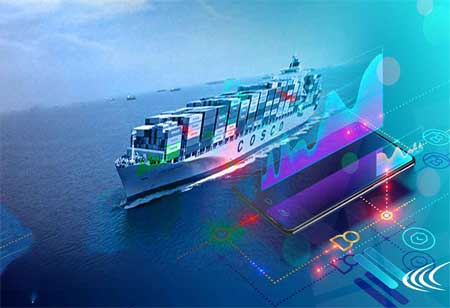THANK YOU FOR SUBSCRIBING
THANK YOU FOR SUBSCRIBING

By
Logistics Transportation Review | Friday, December 13, 2024
Stay ahead of the industry with exclusive feature stories on the top companies, expert insights and the latest news delivered straight to your inbox. Subscribe today.
Containerized cargo revolutionizes shipping, offering efficiency, safety, cost-effectiveness, and environmental benefits. Standardized containers simplify logistics, while technological advancements ensure secure transport.
Fremont, CA: Containerized cargo has transformed the shipping industry, making the transportation of goods more efficient, secure, and cost-effective. This method involves using standardized containers to pack and ship products, simplifying logistics and reducing costs. The advent of containerization has streamlined the shipping process and significantly impacted global trade. This article delves into the various aspects of containerized cargo, highlighting its benefits and the processes involved.
Standardization and Efficiency
The use of standardized containers has brought remarkable efficiency to the shipping industry. These containers come in uniform sizes, typically 20 or 40 feet long, allowing easy stacking and handling. The standardization simplifies the loading and unloading process, reducing ships' time in port and enabling faster turnaround times. This efficiency is crucial in today's fast-paced global trade environment, where timely delivery is essential.
Enhanced Safety and Security
Containerized cargo offers enhanced safety and security for goods during transportation. The robust steel or aluminum containment protects cargo against external disturbances such as weather, thieves, and vandalism. This ensures that commodities arrive at a destination in the best condition possible since there is a reduced likelihood of spoilage or destruction. Additionally, the sealed nature of containers helps prevent tampering and unauthorized access, further safeguarding the contents.
Cost-Effectiveness
One significant advantage of containerized cargo is its cost-effectiveness. By maximizing space and streamlining logistics, containerization reduces transportation costs. Large volumes of goods may be transported in a single container, which lowers freight costs and makes it a cost-effective option for companies. Furthermore, the efficiency gained from quicker loading and unloading processes translates into lower labor costs and reduced port fees.
Versatility in Transport
Containerized cargo can be very versatile because different sorts of goods, raw and processed, can be shipped through it. With a container, cargo from ship to train to truck can easily transfer from one mode of transportation to another without unloading and re-boarding. This intermodal capability enhances the flexibility of shipping routes and allows for seamless transitions between different transportation methods, optimizing the supply chain.
Environmental Benefits
Containerization also offers environmental benefits by reducing the carbon footprint of shipping operations. The efficiency of containerized transport means fewer trips are needed to move the same amount of cargo, leading to lower fuel consumption and emissions. Additionally, using containers minimizes the need for packaging materials, reduces waste, and promotes sustainability in the shipping industry.
Technological Advancements
Technological integration has further increased the advantages of containerized cargo. Thanks to innovations like GPS tracking and Internet of Things (IoT) devices, container whereabouts and conditions may be tracked in real-time. This technological advancement provides greater visibility and control over the supply chain, enabling better logistics management and improving overall efficiency.
I agree We use cookies on this website to enhance your user experience. By clicking any link on this page you are giving your consent for us to set cookies. More info





